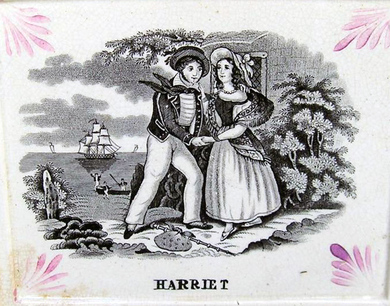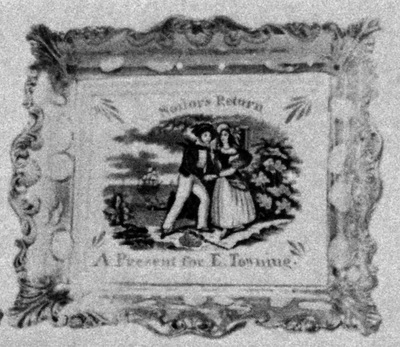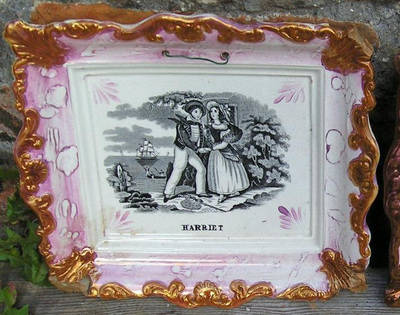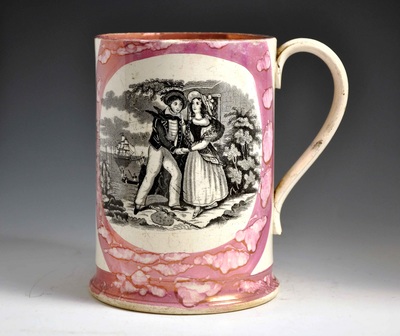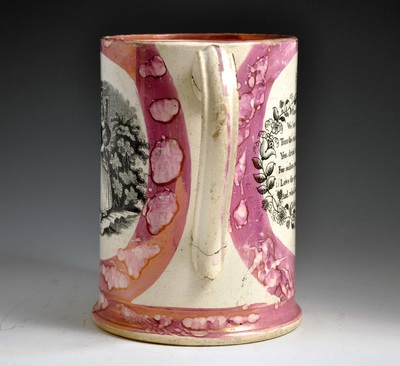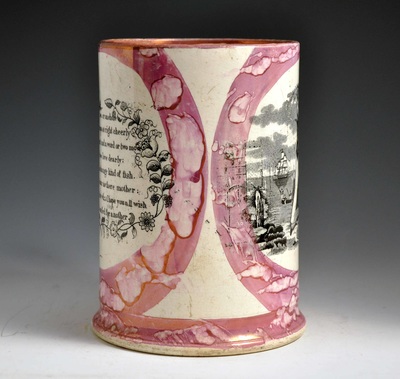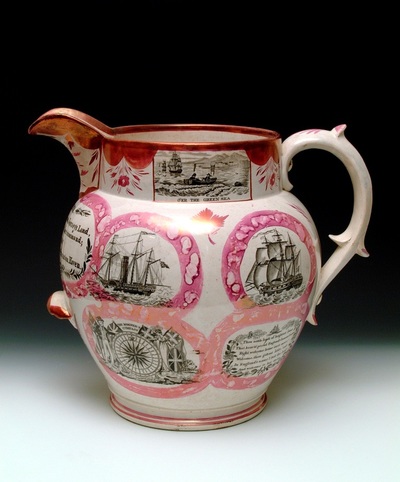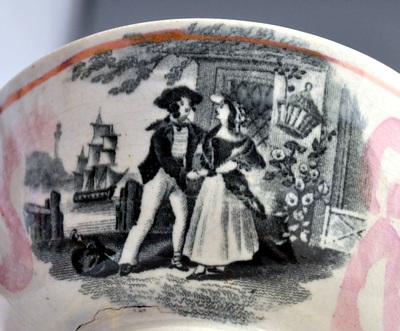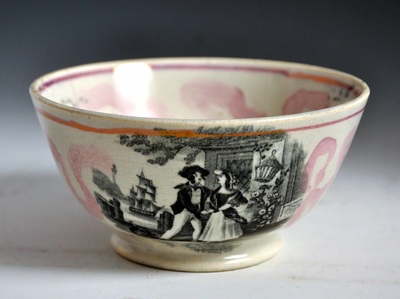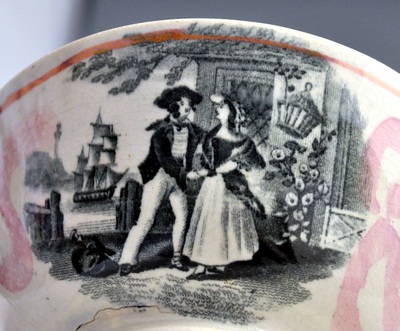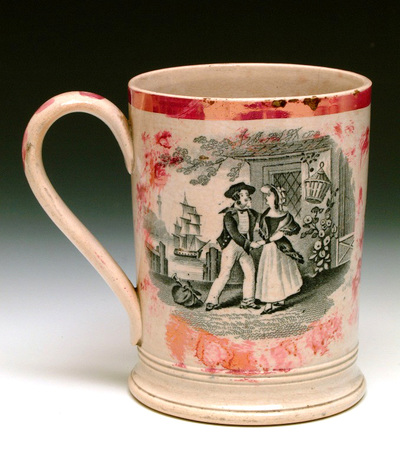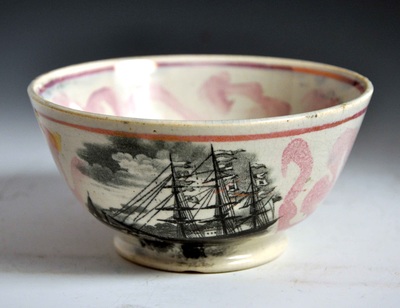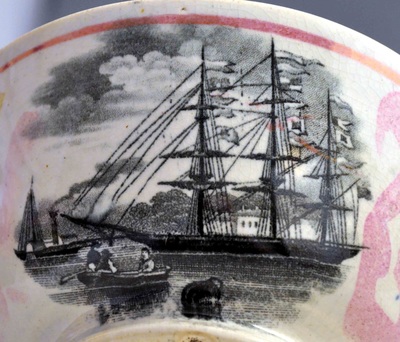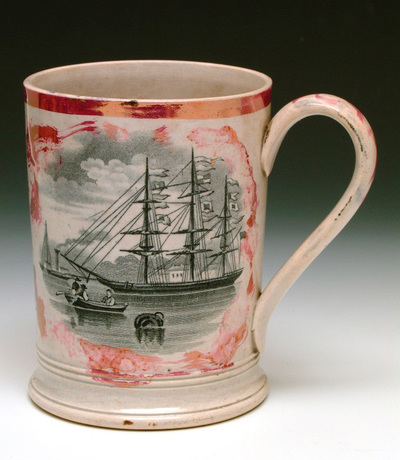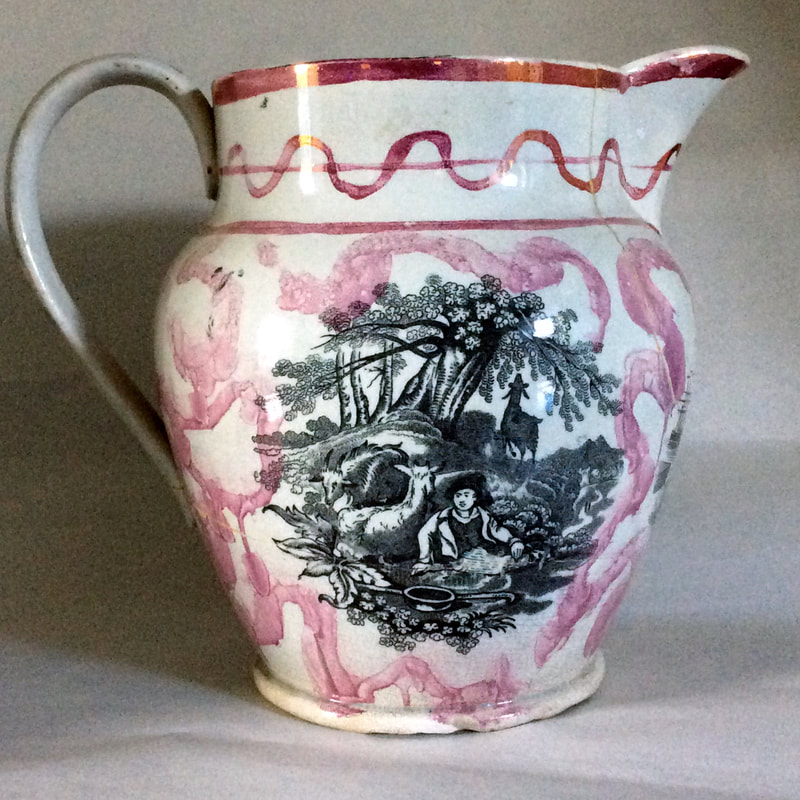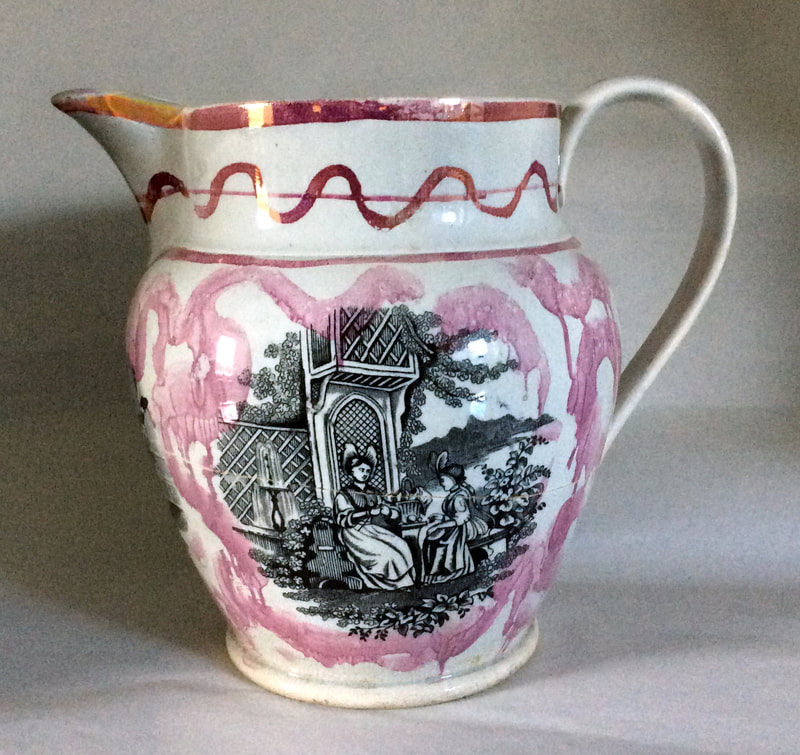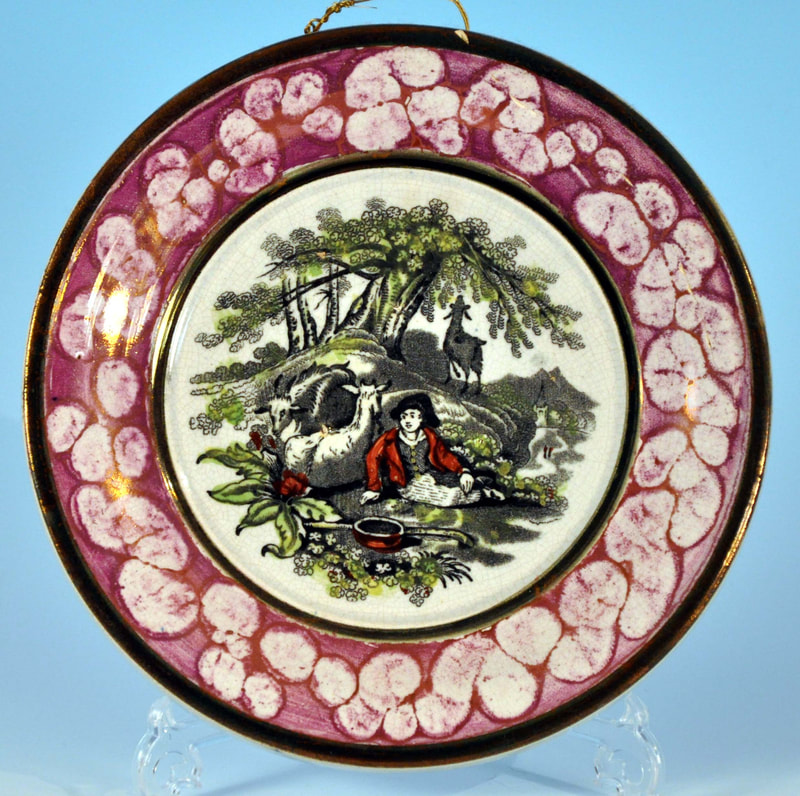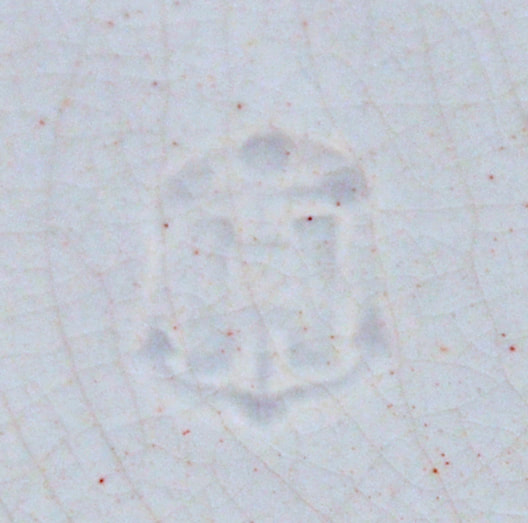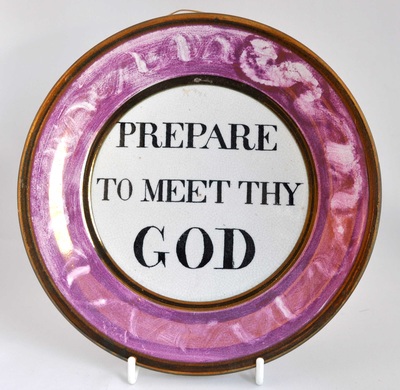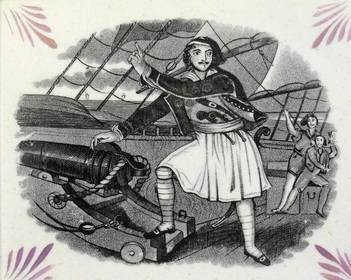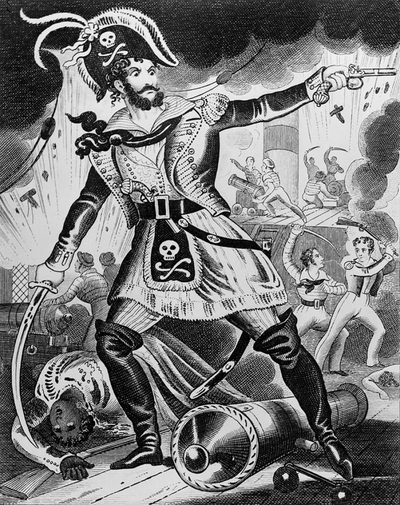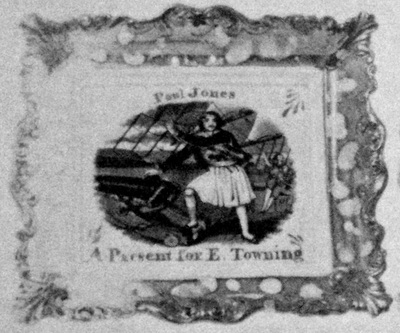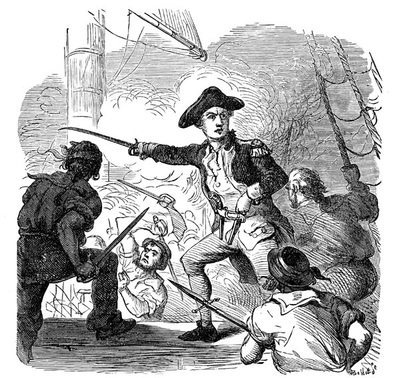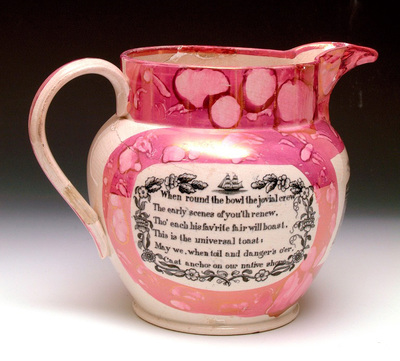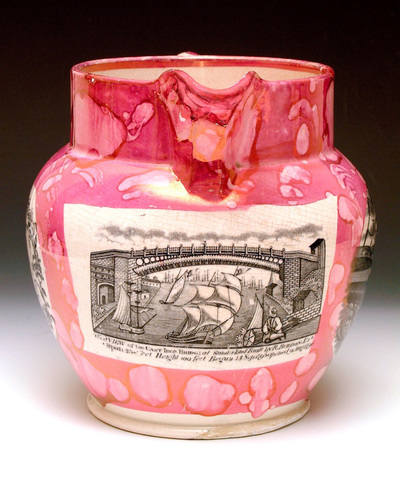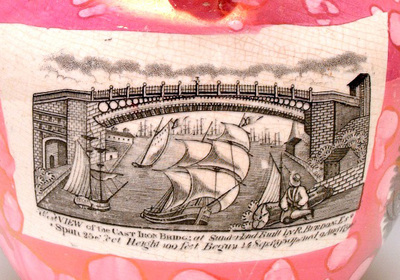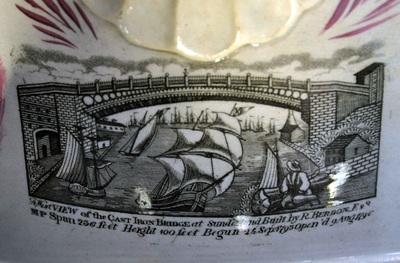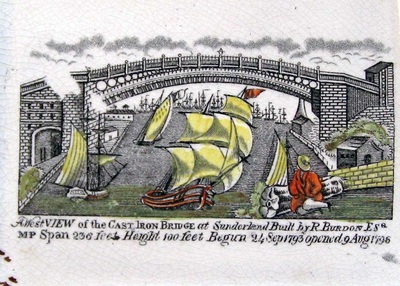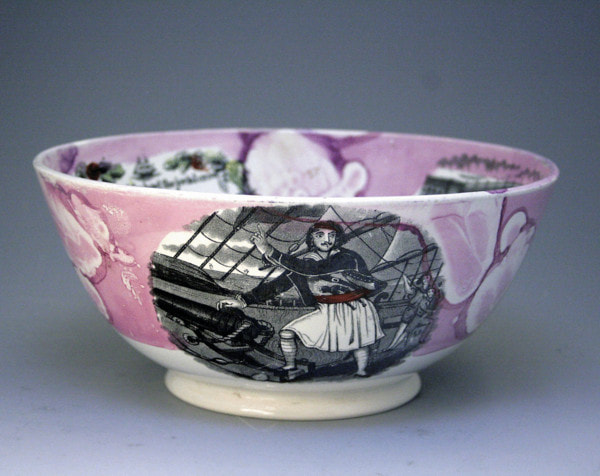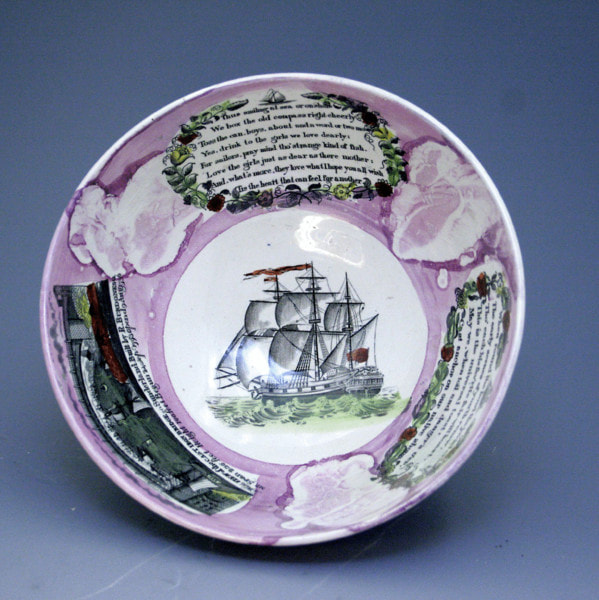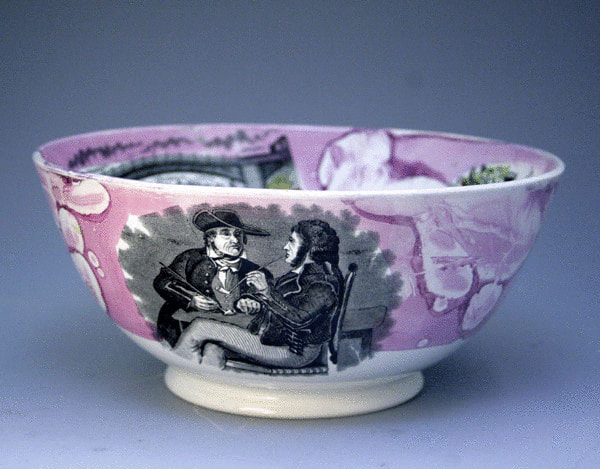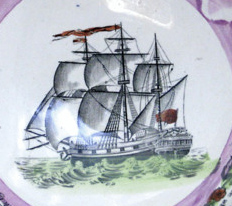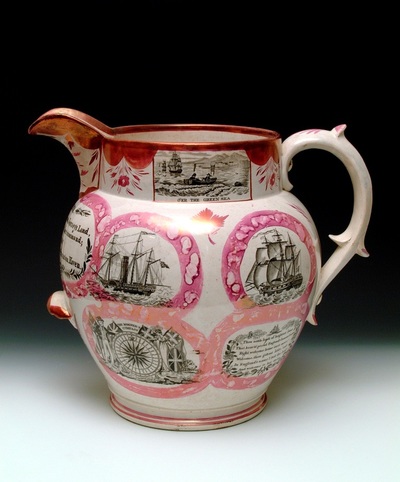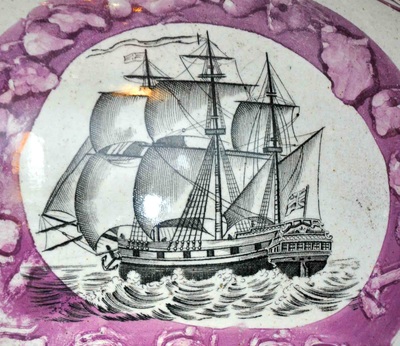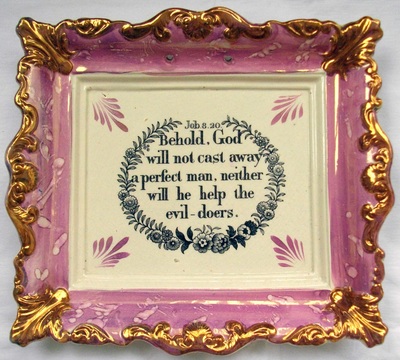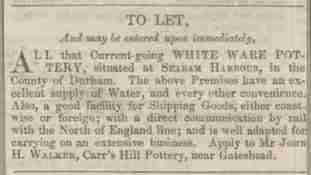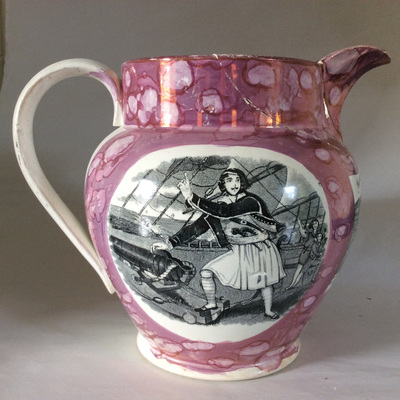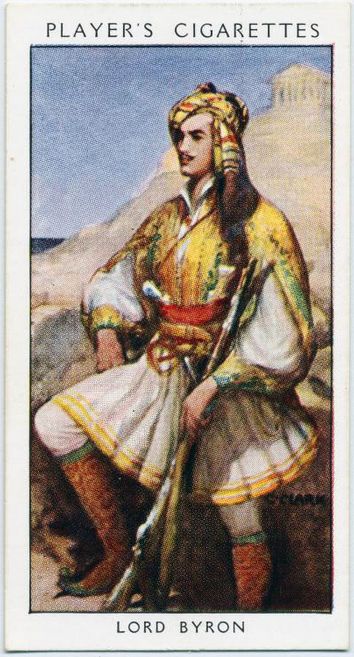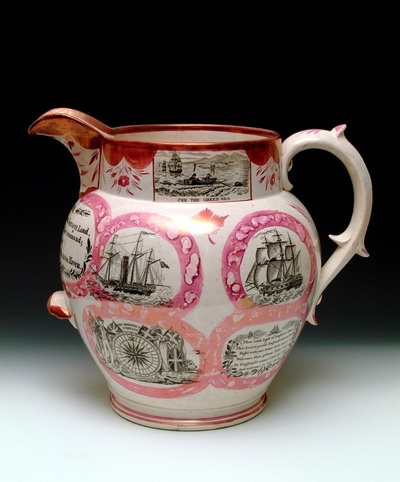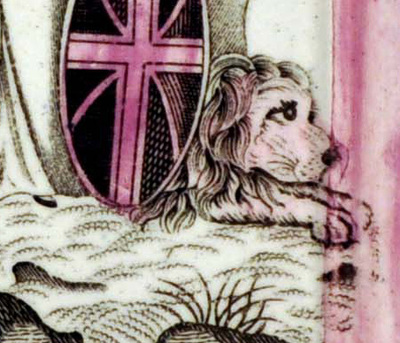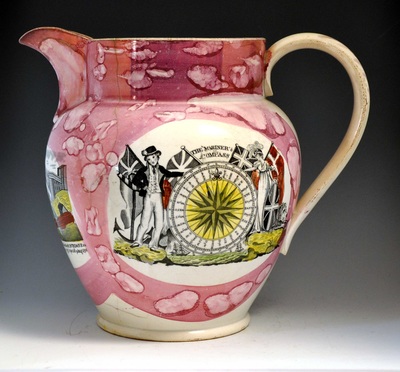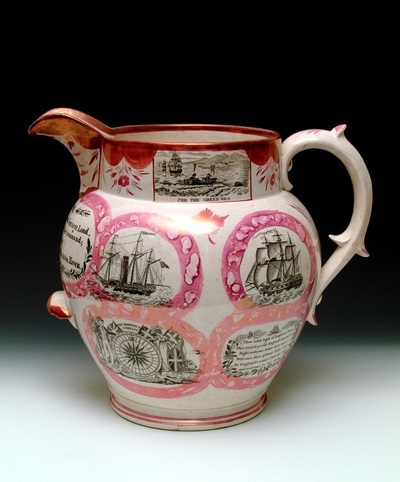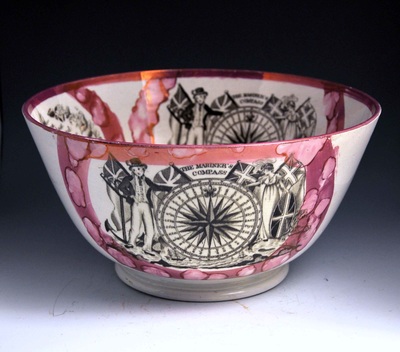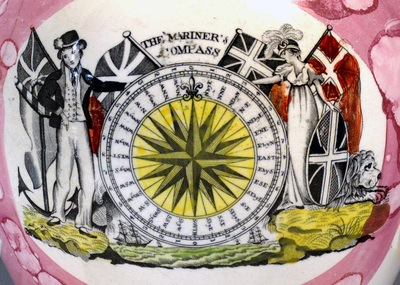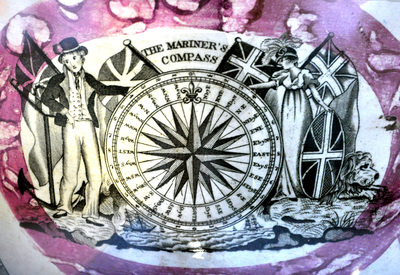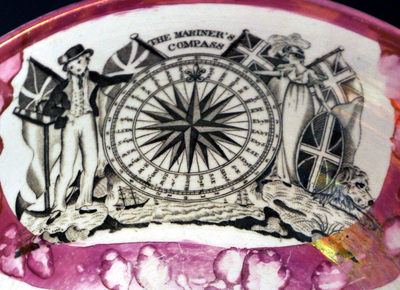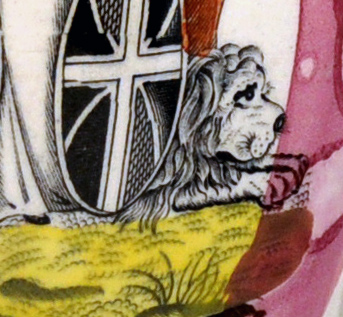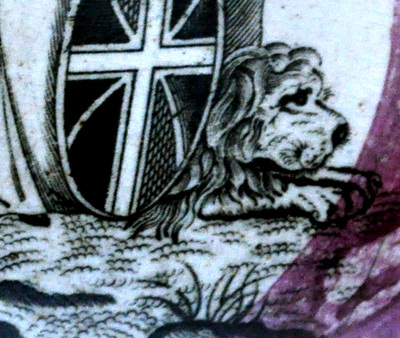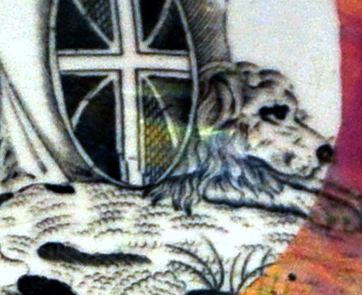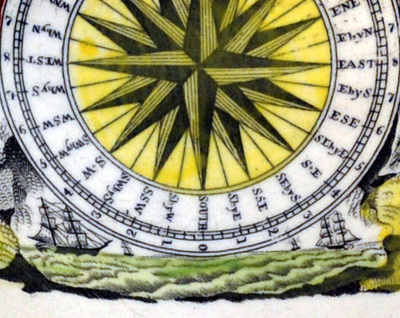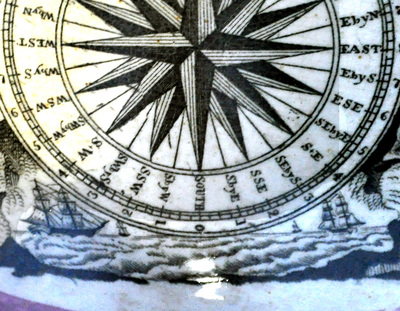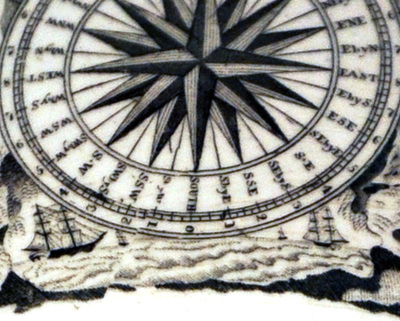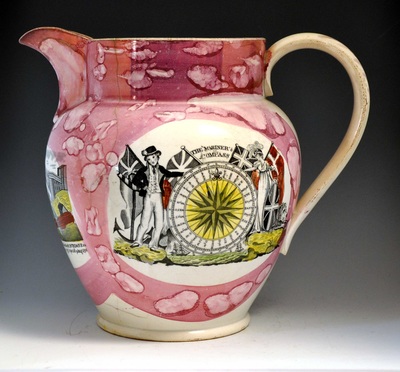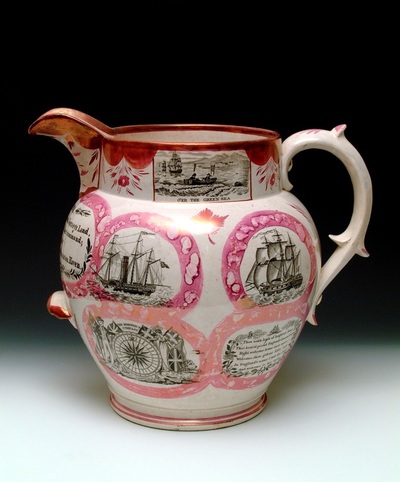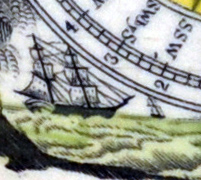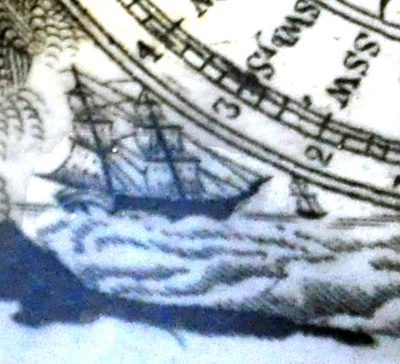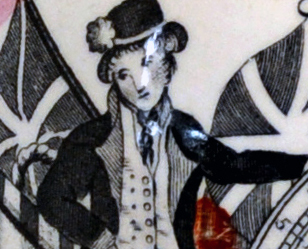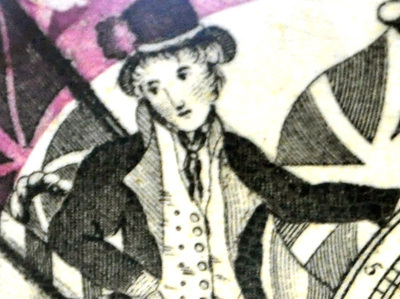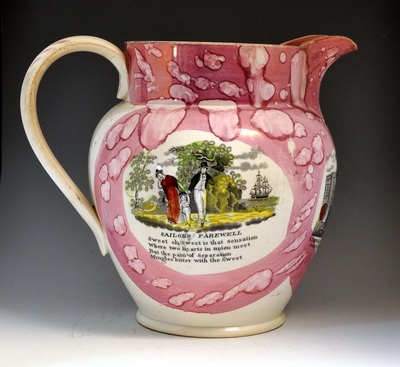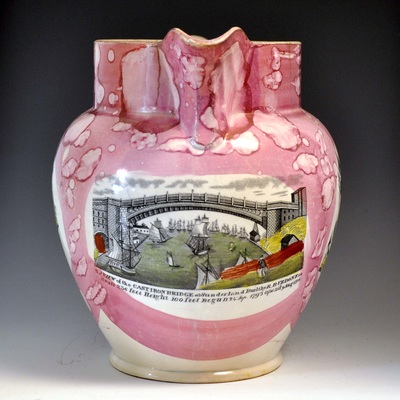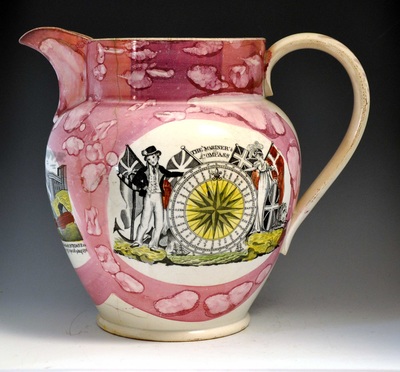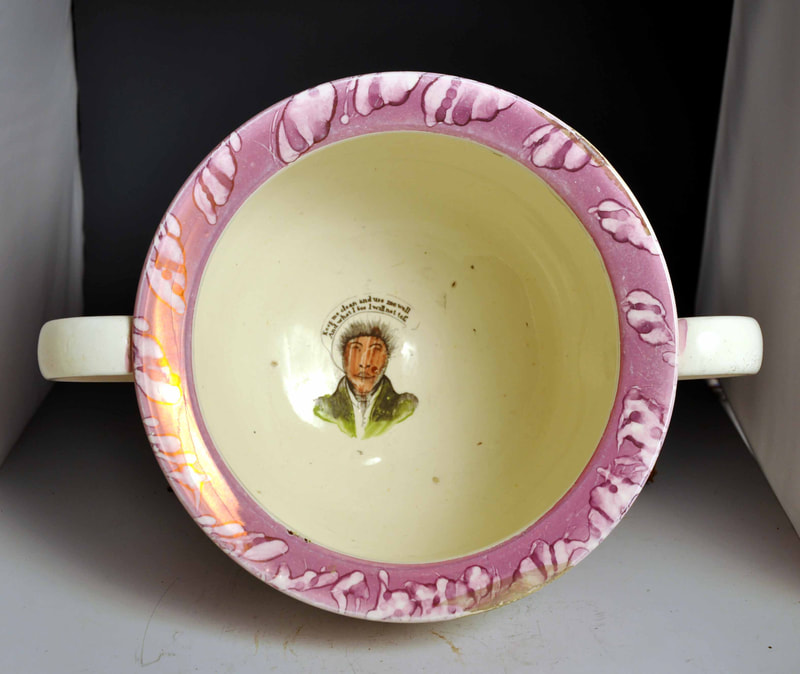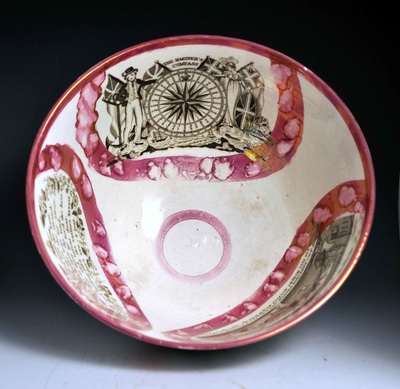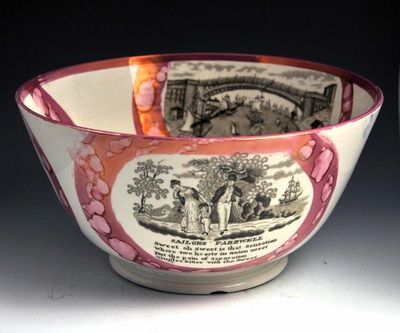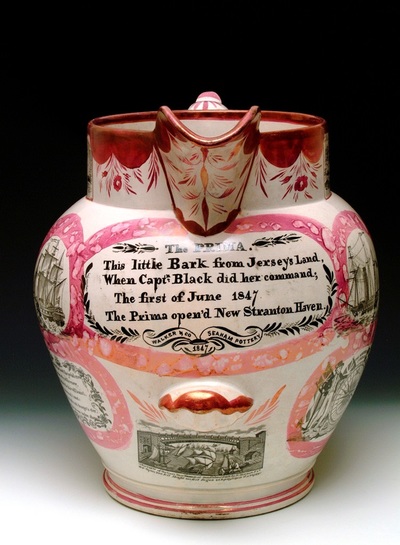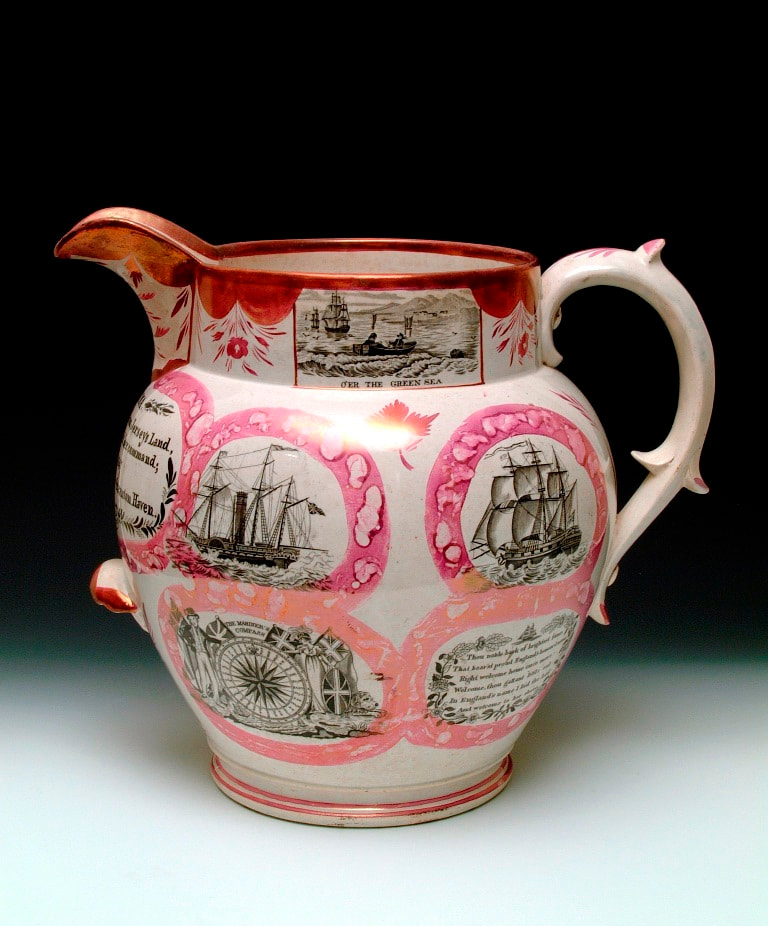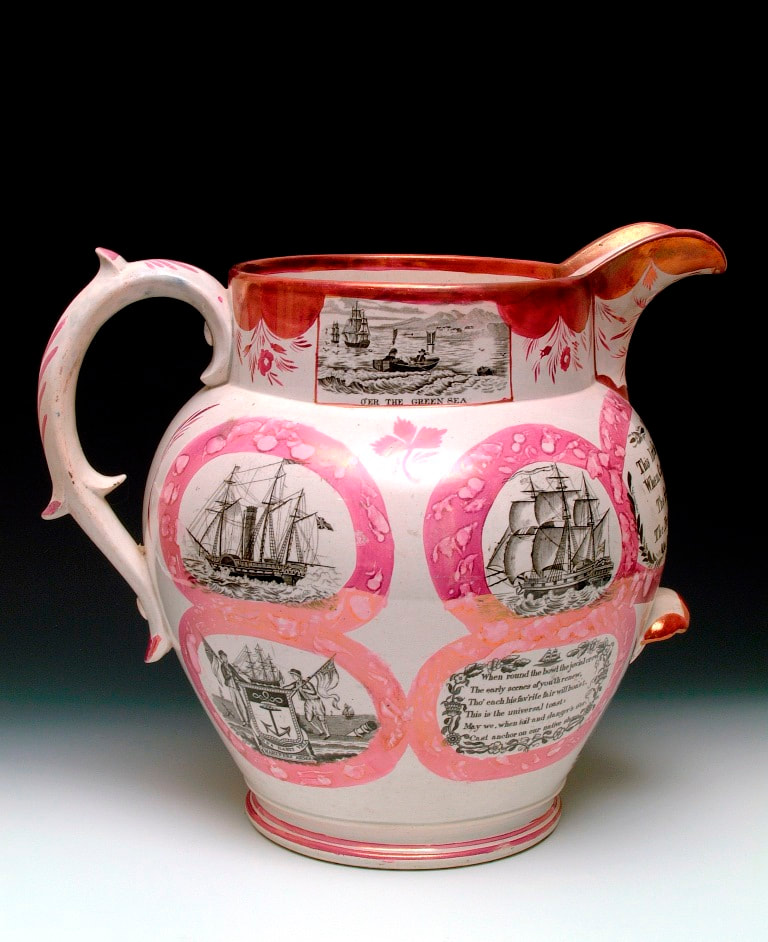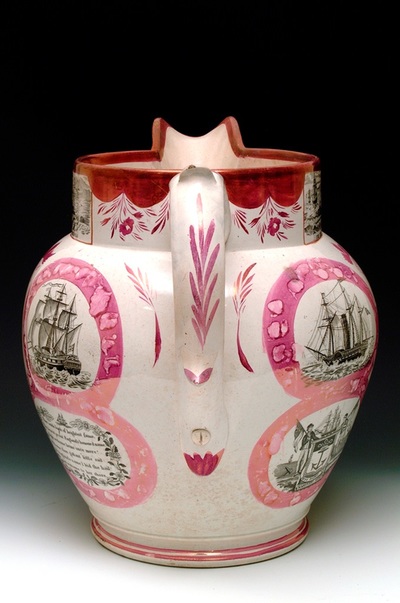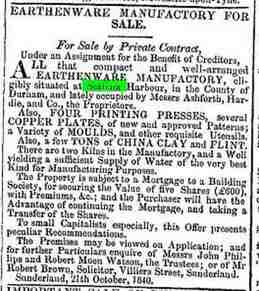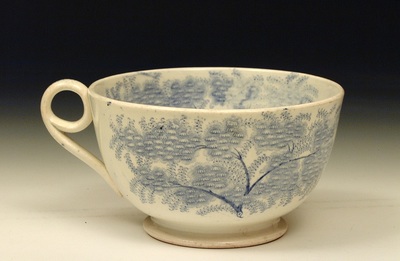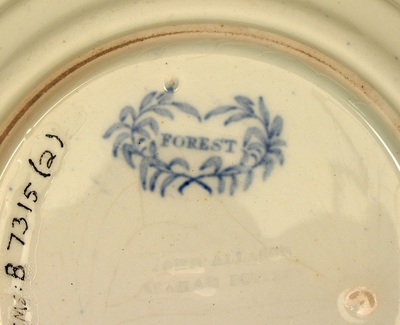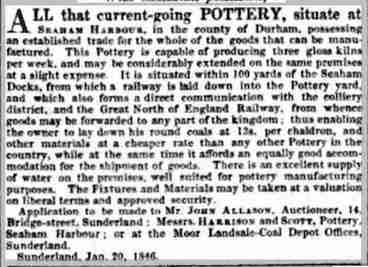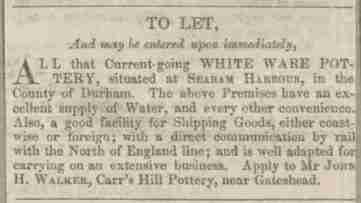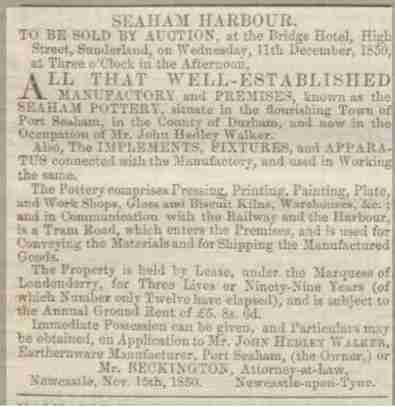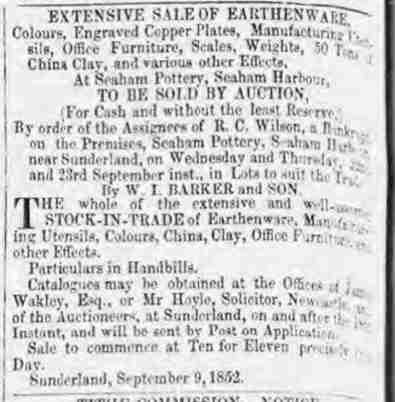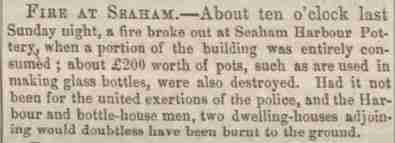|
10/27/2016 0 Comments Seaham Pottery 'Sailor's Return'In my previous post I showed a grainy picture of a plaque titled 'Paul Jones' from an old auction catalogue. Below left is its pair, also inscribed 'A Present for E Towning'. Recently a similar plaque came up on eBay, this time with a hand-painted dedication to 'Harriet' – perhaps a sailor bought it as a gift for his sweetheart. If you were the buyer, please get in touch – I'd love a better photo. This Sailor's Return transfer is attributed to Seaham, and also appears on very large frog mugs like the one below (click on the images to enlarge). The lustre decoration is similar to that on the 1847 Seaham jug (see centre below) in the Sunderland Museum. The final image shows the mug's immense size, next to a slop bowl with a similar transfer. Closer inspection shows that the transfer on the slop bowl, although based on the same image, has some marked differences to the transfer on the mug. Note the lantern in the background in the right image, and the positioning of the sailor's bag. The transfers on the slop bowl match those on a large frog mug in the Sunderland Museum, also attributed to Seaham Pottery. However, their lustre decoration is unlike any of the items attributed to Seaham so far. To my mind, the items above look much more like wares from the Stockton Pottery of Thomas Ainsworth (see below). The circular plaques are sometimes found with impressed marks with a castle and anchor (see below centre), so the attribution for these items is pretty solid. Stockton items are often typified by what Ian Sharp has called 'slug trail' decoration. Note also the bands of lustre around the top of the jug, and compare them with the bowl and the mug above. So the jury is out on the attribution of the slop bowl and second mug. As I've said before, attributing items on the basis of lustre decoration is an imprecise science, so more work needs to be done. As always, if you have items with these transfers that might help, please get in touch.
0 Comments
10/17/2016 0 Comments Seaham Pottery 'Paul Jones' transferDepending on your perspective, John Paul Jones was either the father of the US Navy and hero of the American Revolutionary War (below right), or a pirate (below left). The transfer that appears on Seaham Pottery items is untitled, so it is hard to be 100% sure of its subject, and I haven't been able to identify the source. The Sunderland Museum display states that the figure is Byron. But I've also seen him listed (incorrectly) as Jack Crawford. Perhaps there was a commercial advantage in deliberately leaving his identity open. However, I'm still haunted by the centre image below from an old auction catalogue. (If you own the plaque, please get in touch!) Someone at the Seaham Pottery decided, for one day at least, that the image was to be titled 'Paul Jones'. The jug below, in the Sunderland Museum collection, is catalogued as 'probably Seaham Pottery', but I'm unsure on what basis. In fact, there are a whole group of distinctive transfers catalogued this way, which appear to be unique to the pottery. (More on that in the future.) The jug has a bridge transfer (left below) very similar to the one on the large Seaham jug in the museum (centre below), dated 1847, but they are different - from memory, the transfer on the large jug is smaller. The below right image is from an Albion Pottery (Tyneside) plaque, c1864. Again it is different - note the triangular sail on the front of the large ship in the foreground. The bowl below, from John Howard's archived items, has 'Paul Jones', accompanied by a very distinctive ship transfer, which to date I've only seen on the large Seaham jug in the museum collection (bottom centre and right). I'm unsure whether the two ships come from the same copper plate (without a high resolution image, it's difficult to tell). John's bowl has a bridge transfer that matches the one on the smaller jug above. Anyway, here's the exciting thing, for me at least. I've long known that the plaque on the left below was likely Seaham, but I couldn't reconcile that with the fact that identical plaques are found with religious verses – same unusual large size (215 x 238 mm), buttery lustre, and distinctive decoration. Those verse transfers (the very same ones) also appear on 1850s' plaques with the John Carr & Sons impress. So how did the copper transfer plates find their way from south of Sunderland, up to North Shields on the Tyne? I think the answer could be in the advert below. John Hedley Walker, the owner of the Seaham Pottery, moved his operations to Carr's Hill Pottery near Gateshead in 1849. Now, lest we get too excited, 'Carr's Hill' refers to a village, and not to the North Shields potter of the same name. However, this does provide a plausible explanation for why the copper plates might have migrated northwards beyond Sunderland to Tyneside. P.S. Thanks to Ian Sharp for getting in touch and pointing out the Byron connection to Seaham. Byron married Annabella Milbanke at Seaham Hall in 1815. So the pottery had more reason than most to celebrate the poet. Byron spent time in Greece and had himself painted in Greek dress (see right below). So it's possible the transfer depicts him. We may never know until we discover the source for the transfer.
The Seaham jug in the Sunderland Museum (see previous post) provides a catalogue of transfers used by Walker & Co at that pottery in 1847. This is a great resource, because Seaham items are nearly always unmarked, and difficult to attribute. I thought I'd check items in my own collection and see if I could find a match, and where better to start than the Mariner's Compass, which has always been a favourite transfer. The transfer on the Seaham jug is easily distinguishable from the transfer found on plaques attributed to Newbottle and Moore's (a Newbottle plaque shown on the right below). Compare the two details, each from the item above. N.B. the transfer on the jug (left) is applied to a curved surface, so there are distortions of perspective, but even so, it's clear that the transfers come from different copper plates. The shading of the fur on the lion's cheek is running in a different direction. The tufts of grass in the foreground are different. But I did manage to find two items that matched (see below). Again, you need to remember the transfers are on curved surfaces, and stretched in different directions. But the shading on the lion and the tufts of grass now match. We know that the first jug, with coloured enamels was made earlier, because the other two objects show scratches on the copper plate that don't appear on the first. Look at the lower right quadrant of the shield (third row below). The centre jug and the bowl have a dark line through the diagonal white band that doesn't appear on the first. Also look at the lower left points of the star in the centre of the compass (bottom row). The centre jug and the bowl have a scratch coming off the point at SSW, but again the first doesn't. The scratches show that the Seaham jug in the Sunderland Museum and my bowl have transfers that are indisputably from the same copper plate. But are there any imperfections that tie together the two jugs? I believe there are. Firstly, the engraver looks to have slipped, and there's a small diagonal fleck that appears to the left of SSW. Secondly, the shading of the waistcoat of the male figure spills over slightly onto his left lapel. So I have at least two items of Seaham Pottery. The bowl, which has very similar decoration to the Sunderland Museum jug, was likely also made by Walker & Co, c1847. The jug with coloured enamels is earlier but whether made by Walker & Co, John Allason, or an earlier partnership at Seaham, it's hard to say. By looking at the other transfers on my jug and bowl we can further expand the Seaham 'catalogue'. If you have a similar item you'd like me to take a look at, please get in touch.
10/15/2016 1 Comment Seaham PotteryArguably, the most impressive item in the Sunderland Museum and Winter Gardens' collection of local pottery is the Seaham Jug. It was purchased with Art Fund money in 1994, a decade after Baker's book on Sunderland Pottery was last updated. The book contains surprisingly little information about the pottery that produced this spectacular item. Baker lists Seaham's products as 'brown ware and transfer-printed tableware'. The inscription on the jug includes a painted factory mark 'Walker & Co, Seaham Pottery 1847' (click images to enlarge). However, his ownership is only hinted at in Baker. I am indebted to local historian Fred Cooper for the press cuttings that follow, and to Shauna Gregg at the Sunderland Museum and Winter Gardens for the photos of pottery. Baker suggests the pottery was built 'in 1836 by Captain Plowright of Lynn for the manufacture of brown ware'. The pottery was then owned by 'a group of workers from Dawson's Pottery who converted the works to the production of printed white ware', and operated between 1838 and 1841. The first cutting is from the Newcastle Courant, November 6th, 1840. It advertises the sale of an earthenware manufactory with 'peculiar recommendations' to 'small capitalists especially'. The list of effects confirms Baker's description above and includes 'four printing presses' and 'several copper plates, of new and approved patterns'. Contrary to Baker's dates, the factory appears to have then been run by John Allason between 1841 and 1846. Here's an item with the impressed mark 'John Allason, Seaham Pottery' from the Sunderland Museum collection. The advert below, interestingly from the Staffordshire Advertiser, tries to attract buyers from the other side of the country. The advert draws attention to the close proximity to the docks, railway and colliery district – factors which created a huge competitive advantage for north-east pottery manufacturers. From 1846 to 1850, the pottery was owned by John Hedley Walker. So the Sunderland Museum jug fits in here, made in 1847 by 'Walker & Co'. In March 1849, there's a notice in the Newcastle Guardian offering the premises to let 'immediately', and Walker appears to have moved to Carr's Hill Pottery, near Gateshead. Walker sold the premises at an auction on December 11th, 1850 (this notice taken from the Newcastle Journal, November 23rd, 1850). The property is again offered for 'immediate possession'. The property appears to have been bought by R.C. Wilson, but his ownership was short lived. An advert in the Newcastle Courant, September 10th, 1852, describes R.C. Wilson as 'a bankrupt', and offers the pottery's effects, including copper plates, for sale without reserve. The misfortunes of the pottery continue with a fire in 1854 'entirely consuming' the premises (this cutting from the Newcastle Guardian, April 1st, 1854). Interestingly, Baker writes that 'Fordyce in his History of the County of Durham, 1857, states that Seaham Harbour Pottery belongs to Mr John Hedley Walker'. However, it seems unlikely that after having to let the property in 1849, and after it had driven R.C. Wilson to bankruptcy, that Walker would want to rebuild it.
|
AuthorStephen Smith lives in London, and is always happy to hear from other collectors. If you have an interesting collection of plaques, and are based in the UK, he will photograph them for you. Free advice given regarding selling and dispersal of a collection, or to those wishing to start one. Just get in touch... Archives
February 2022
AcknowledgementsThis website is indebted to collectors, dealers and enthusiasts who have shared their knowledge or photos. In particular: Ian Holmes, Stephen Duckworth, Dick Henrywood, Norman Lowe, Keith Lovell, Donald H Ryan, Harold Crowder, Jack and Joyce Cockerill, Myrna Schkolne, Elinor Penna, Ian Sharp, Shauna Gregg at the Sunderland Museum, Keith Bell, Martyn Edgell, and Liz Denton.
|
